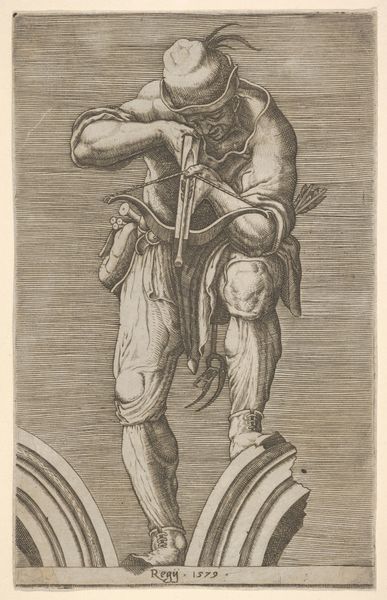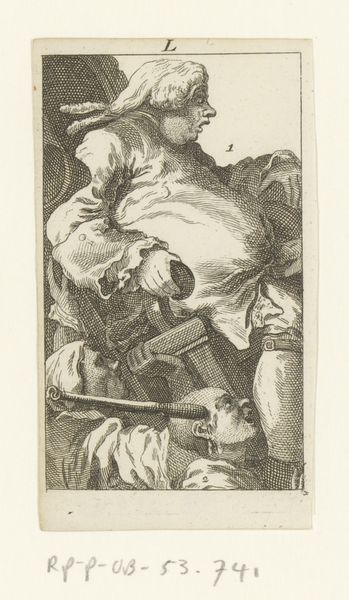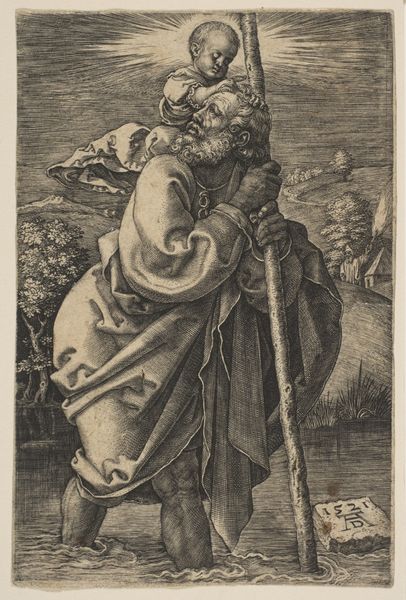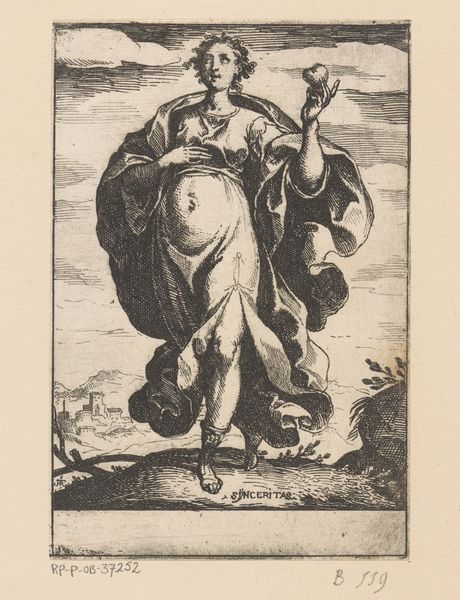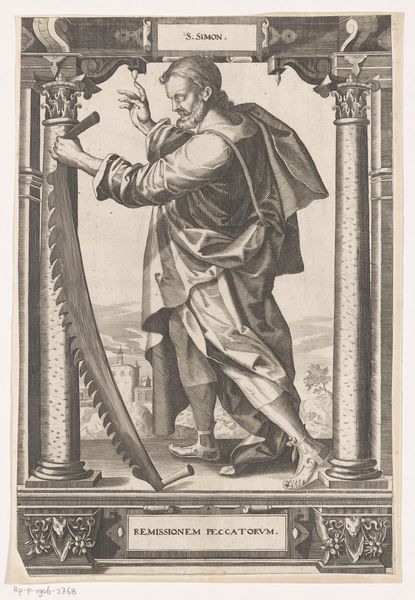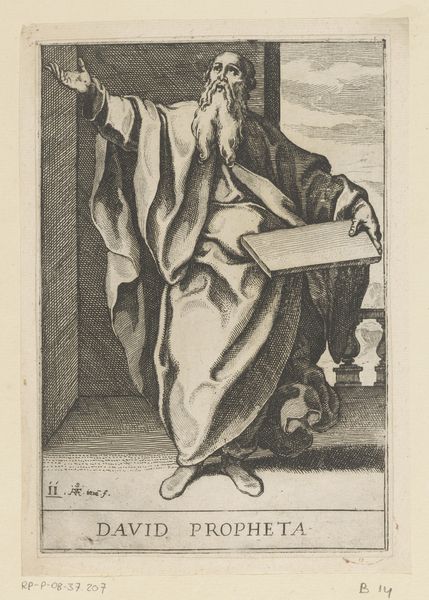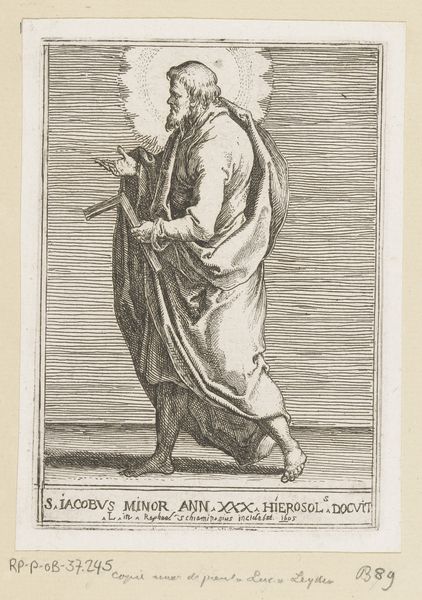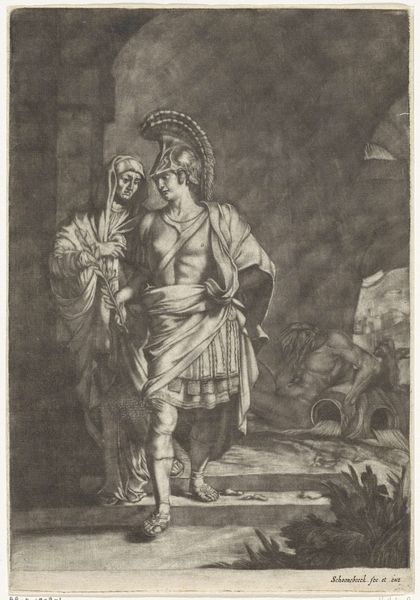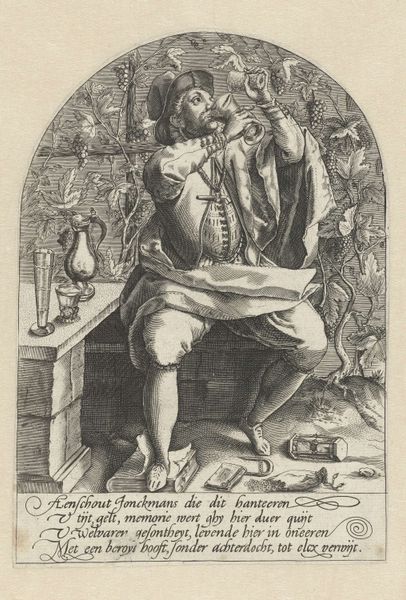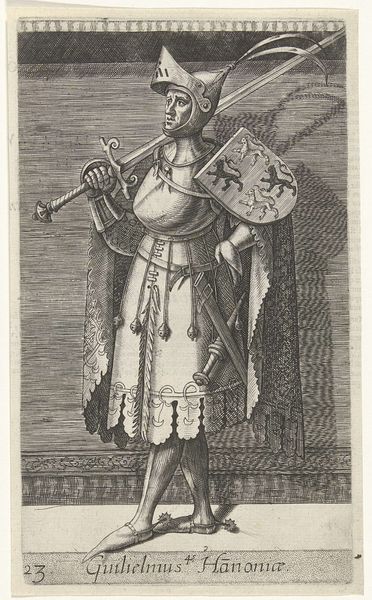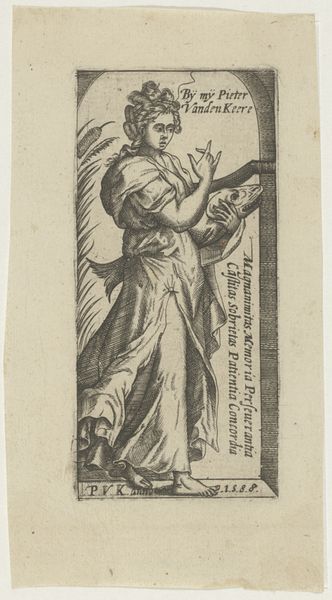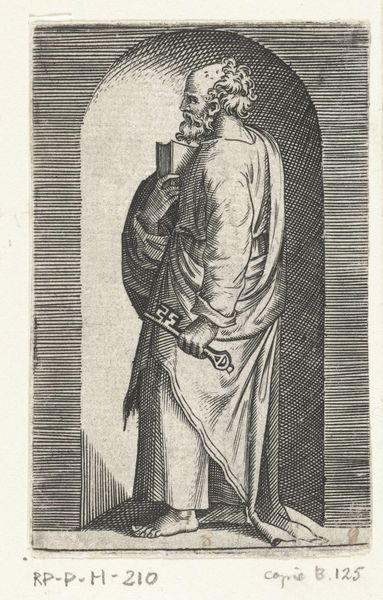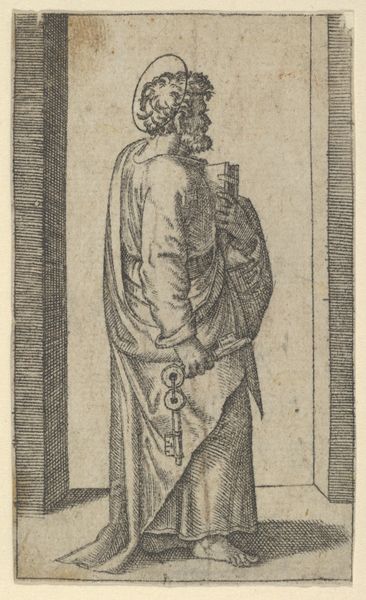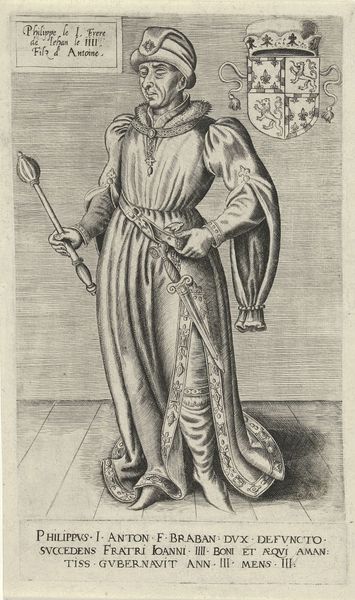
print, engraving
#
portrait
# print
#
old engraving style
#
caricature
#
mannerism
#
11_renaissance
#
engraving
Dimensions: height 240 mm, width 145 mm
Copyright: Rijks Museum: Open Domain
Curator: Before us we have "Raheme Soltane," a print created in 1581 by Melchior Lorck, now held in the Rijksmuseum. It's an engraving. Editor: It's striking. Immediately I’m struck by the... weight of the gaze and adornment, almost a defiant elegance. There is something powerful, though filtered through the male gaze of the time. Curator: Lorck was a fascinating figure, traveling extensively as a court artist and a diplomat representing various European powers in the Ottoman Empire. It provides context, of course. Here, "Raheme Soltane" serves less as a simple portrait and more as a document of cultural exchange and the early modern fascination with the 'exotic.' The role of such works, created by a northern European artist, for a European viewership, demands our consideration. Editor: Precisely. We need to understand the circumstances. I’m thinking about the artist, the audience, and the political function served by depicting this person in this way. This image can act as both a record and an example of power dynamics. The almost exaggerated detail of the turban and jewelry…is it reverence or othering? How complicit are we now, in how that image is understood? Curator: Good questions. I think Lorck’s work, generally, walked a line between ethnographic documentation and... well, as you say, othering. The meticulous detail could be seen as respect or objectification. The function of art then, much as it is now, was as an indicator of who has the privilege to see and represent who gets seen. Editor: And it brings me back to that powerful but complicated gaze. It’s essential that we engage critically with these works to excavate these hidden histories and continue dialogues surrounding representation. Who held power is important, and understanding it can lead to discussions of whose power remains underrepresented today. Curator: Absolutely. Examining these images helps us to analyze not just the past, but the enduring legacy of these visual politics in the present. Editor: In short, to consider whose stories are missing, as well as those being presented. Curator: Yes, precisely. A piece like this serves as a vital lens through which to analyze historical power structures and, crucially, where we situate ourselves within their lasting influence.
Comments
No comments
Be the first to comment and join the conversation on the ultimate creative platform.
